Key facts
- Measurement range: -70 dBm to +23 dBm
- Frequency range: 8 kHz to 18 GHz
- Specially designed for EMC applications
- Measurement of continuous average power
- 93 dB dynamic range for CW and modulated signals

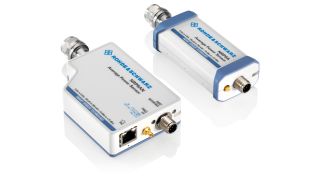
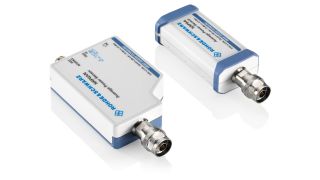
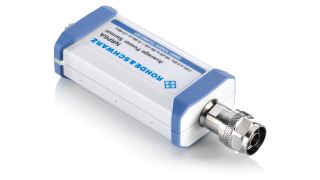
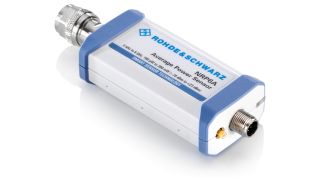
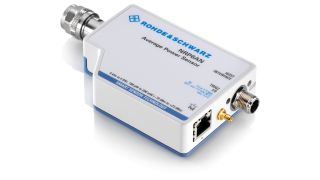
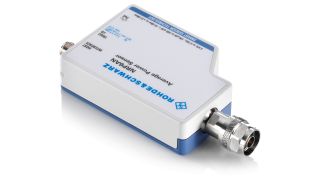
Key facts
In EMC applications, usually only the average power is of interest. This is where the R&S®NRPxxA/AN average power sensors are the perfect fit. They cover measurement ranges that are used in radio telecommunications as well as the important lower frequency bands down to 8 kHz. Users benefit from the excellent properties of the three-path diode power sensors, including a dynamic range of up to 93 dB, very low influence of the modulation on the measurement and outstanding impedance matching.
Quick links
-70 dBm up to +23 dBm and 8 kHz up to 18 GHz
The R&S®NRPxxA/AN average power sensors cover a wide measurement range from -70 dBm up to +23 dBm, including a dynamic range of up to 93 dB for CW and modulated signals. Frequencies range from 8 kHz up to 18 GHz covering radio telecommunications as well as the important lower frequency bands.
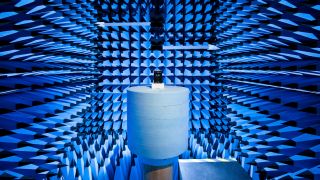
R&®NRPxxA/AN designed for EMC applications
Use a display unit or connect directly to your PC
The power sensors come with various, detachable cables for connection to diverse display units such as the R&S®NRX. A screw connection is provided on the sensor end to prevent accidental loosening of the cable.
The R&S®NRP-ZKU USB interface cable can be used to connect a power sensor to a laptop/PC via the USB interface. This is an extremely space-saving and also cost-efficient solution that does not require a base unit.
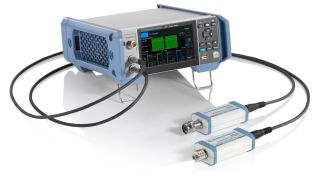
R&S®NRX setup with NRP sensors
Ideal for remote monitoring applications
The LAN power sensors are ideal for remote monitoring applications, e.g. for satellite systems or particle accelerators, where sensors need to be placed at different points in the system. The LAN interface makes it easy to overcome large distances between the various test points and the control center.
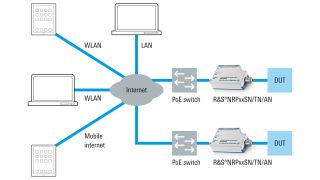
LAN operation of R&S®NRPxxSN/TN/AN power sensors

Order number 1419.0658.02
USB-A interface cable, length: 0.75 m

Order number 1419.0658.03
USB-A interface cable, length: 1.5 m

Order number 1419.0658.04
USB-A interface cable, length: 3 m

Order number 1419.0658.05
USB-A interface cable, length: 5 m
Order number 1425.2442.02
USB-C interface cable, length: 0.75 m
Order number 1425.2442.03
USB-C interface cable, length: 1.5 m
Order number 1425.2442.04
USB-C interface cable, length: 3.0 m
Order number 1419.0664.02
6-pole interface cable, length: 1.5 m
Order number 1419.0664.03
6-pole interface cable, length: 3 m
Order number 1419.0664.04
6-pole interface cable, length: 5 m
Order number 1424.9408.02
8-pole interface cable, length: 1.50 m
For connection to R&S®NRX
Order number 1424.9408.03
8-pole interface cable, length: 3.00 m
For connection to R&S®NRX
Order number 1424.9408.04
8-pole interface cable, length: 5.00 m
For connection to R&S®NRX

Order number 1146.7740.02
USB sensor hub
R&S®NRP-Z5 can host up to 4 R&S®NRPxxS(N), R&S®NRPxxT(N), R&S®NRPxxA(N) or R&S®NRP-Z sensors. A professional trigger solution allows simultaneous internal and external triggering of all connected sensors.
Order number 0240.2187.06
Documentation of calibration values
Order number 1173.6506.02
Printout of DCV
Manufacturer's recommended retail price (MSRP). The price shown does not include VAT. Prices and offers are only intended for entrepreneurs and not for private end consumers.
You may use the electronic signature via DocuSign to submit your information to enroll with the Rohde & Schwarz Customer Delegated Administration program. DocuSign processes the information provided according to their . The minimum system requirements for using the DocuSign system may change over time. The current system requirements are found
Terms & Conditions of the Prize Draw 10 years Rohde & Schwarz oscilloscopes
1. The prize draw “10 years Rohde & Schwarz oscilloscopes” (herein referred to as “Draw”) is organized by Rohde & Schwarz GmbH & Co. KG, Mühldorfstraße 15, 81671 Munich, Germany, Tel. +49 89 41 29 0 (herein referred to as “R&S).
2. All participators can register to the draw during January 01, 2020 to December 31, 2020 with their name, company name and business e-mail.
3. Participation is free of charge and not dependent on the purchase of goods or services.
4. The draw is only open to legal entities and only the legal entities are able to win the prizes. An individual person is not allowed to participate on its own name and its own account but as a representative of a legal entity filing the participation form in the name of and on behalf of the legal entity.
5. The prizes to win are 1 of 10 R&S®RTB2000 within the time frame January 1, 2020 to December 31, 2020:
Prize: 1x R&S®RTB2000 Digital Oscilloscope
6. The draw takes place at Rohde & Schwarz headquarters, Muehldorstrasse 15, 81671 Munich. The winner of the prizes will be informed by e-mail within 5 (5) working days.
7. The authorized representative of the legal entity shall inform Rohde & Schwarz about the acceptance of the price. In case of the denial of the acceptance, or no answer within two (2) weeks, a new winner will be drawn. If no winner can be determined within four (4) weeks, the draw ends and the prize forfeit.
8. R&S’ employees and members of their families and also person being familiar with the process of the draw and members of their families are excluded from filling the participation form.
9. No cash equivalent or exchange of prizes is allowed. Prizes are non-transferable. All taxes, levies, duties, fees and other charges levied in the participant´s country shall be borne by the participant.
10. Personal data will be processed only for the purpose of this prize draw and deleted four (4) weeks after the draw, if not agreed otherwise.
11. Any Participant who does not comply with these Terms & Conditions may be disqualified by R&S from this Competition. In such cases, prizes can also be withdrawn retrospectively. In case a prize is withdrawn retrospectively due to the non-compliance with these Terms & Conditions, it shall be returned by the respective participant at his cost to R&S’ address mentioned under Nr.1 and a new winner will be drawn.
12. The participants cannot claim the prizes of this draw and no legal recourse is permitted in this respect.
13. The draw and any contractual relationship arising therefrom between R&S and the respective participant shall be governed by and construed in accordance with the laws of Germany, without any recourse to the conflict of laws. The courts of Munich, Germany, shall have exclusive jurisdiction in case of any disputes arising directly or indirectly from the participation in this Competition.
* “fast delivery” inside 7 working days applies to the Rohde & Schwarz in-house procedures from order processing through to available ex-factory to ship.







